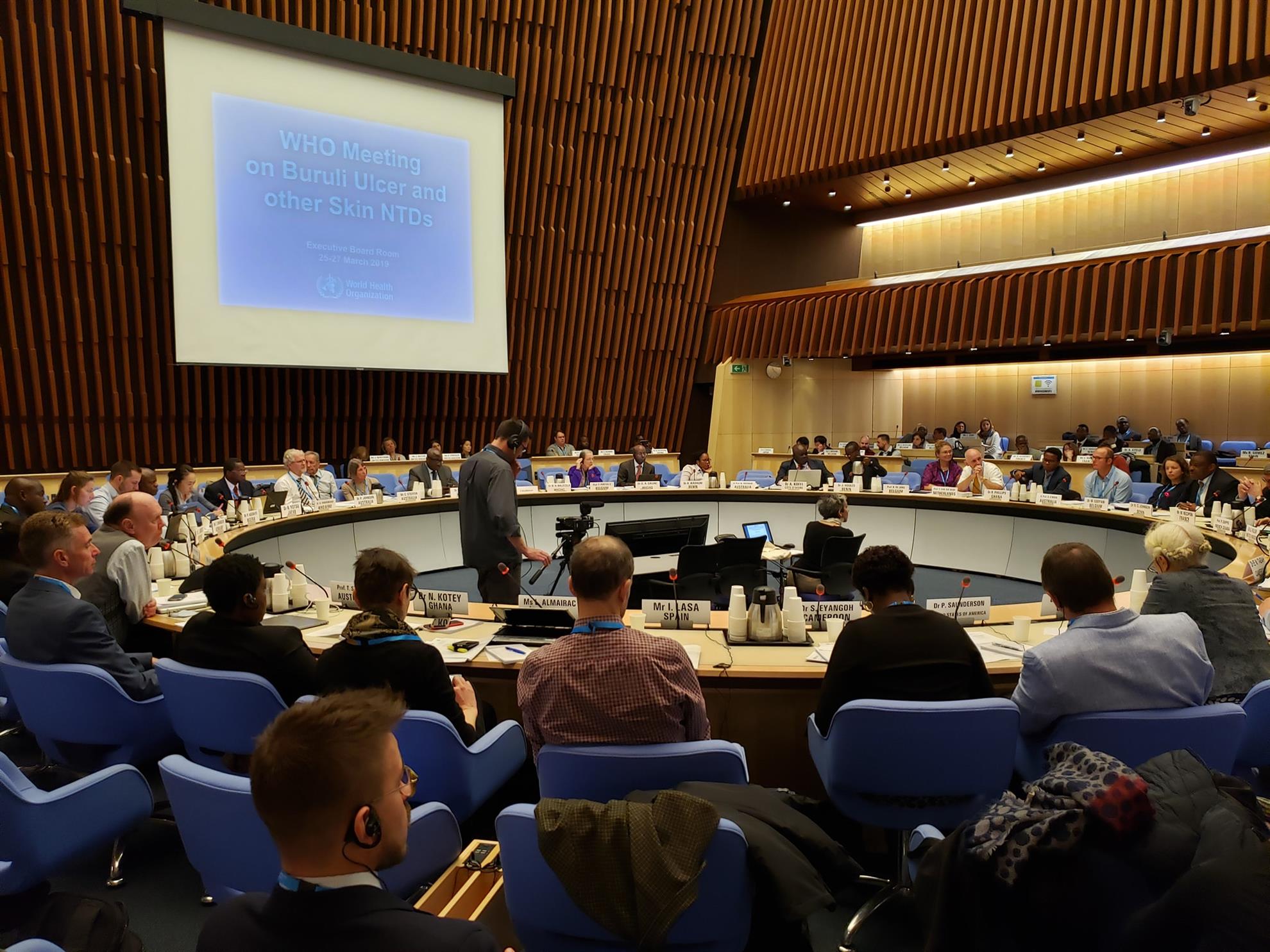WHO Conference 2019

Some Background
In 1998 a special WHO Conference on Buruli ulcer was held in Yamoussoukro, Cote d'Ivoire. It recognized Buruli ulcer as a damaging skin disease about which little was known and one for which no reliable treatment was currently available. The result was that treatment often meant surgery and skin grafting that often led to long periods of recovery and scarring as well as financial hardship for the family.
Although Buruli ulcer was known in 33 countries, the greatest areas of concern were parts of West Africa and Australia. Most frequent victims are healthy children and adolescents. Research has shown that Buruli ulcer is caused by infection with Mycobacterium ulcerans, which produces a potent toxin known as mycolactone. This toxin destroys the cells beneath the skin leading to the development of large ulcers with edges that undermine the surface.
Pilot Study
Most cases occur in rural areas where the known treatment of a series of injections was not practical. A pilot study was undertaken in Cote d’Ivoire to evaluate an eight week oral antibiotic regimen for medical management of Buruli ulcer. The pilot study showed that further study was warranted to determine the effectiveness of an antibiotic regimen. Research was expanded to Ghana and Benin and the results of using rifampicin and streptomycin showed that early treatment produced good results that eliminated the infection and the need for surgery. It is now recognized that oral treatment is safe and can be trusted.
Regular conferences that reviewed progress and made recommendations have taken place since 1998. In 2012 we attended the conference that was convened in Kumasi, Ghana, and our involvement with the research and its application has continued since that time. In both 2017 and 2019, Rotarian Peter Labelle and Emmanuel Agumah, founder of Buruli Ulcer Victims Aid (BUVA), were invited to present information about the work being done by Rotary and BUVA in Ghana.
We’ve Come a Long Way
In 2019, the recommendations included
- the integration of the management of Neglected Tropical Diseases (NTDs);
- ongoing education, screening, testing and research.
- program for eradication of Yaws disease

